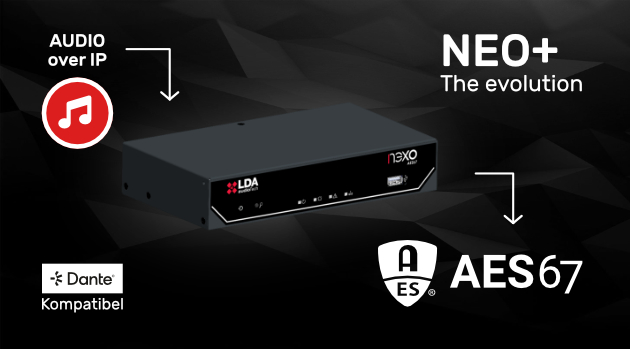Audio over IP systems that use the AES67 transmission standard are clearly superior to those that work with manufacturer-specific (proprietary) protocols: they are independent, flexible and easy to integrate.
Audio transmission via data networks or Audio over IP is a widely used technology in all types of installations, especially when secure, stable and fast transmission is required, such as in public address, communication or voice alarm systems.
Layer 3 audio over IP makes it possible to send the digital signal over the same network as the other systems (video, Internet, etc.). This reduces costs by saving on cabling, simplifies installation in any complex project and offers reliability and stability.
The AES67 standard, developed by the Audio Engineering Society, provides a layer 3 protocol to enable interoperability between different audio-over-IP systems. It is an open standard that can be used freely, making it more competitive with other proprietary protocols on the market.
For EN54 public address and voice evacuation systems, it is important that the audio signal is stable, of high quality and with low latency. When these systems are integrated into an IP network, AES67 provides the technical functions required for integration.
Another advantage of the AES67 protocol is that it is independent of third parties. – This is in contrast to proprietary protocols where all components are tied to an external developer.
EN54 systems go through a demanding international certification process, where all hardware and firmware components are tested according to the standards.
The use of an open standard such as AES67 makes it possible to keep control of the entire product certification process in the hands of in-house developers. This ensures autonomous research and development without having to resort to updating proprietary protocols from other manufacturers. This is because when using third-party proprietary protocols, any changes to these, even if they are not related to use in the system, must be reported and may require a new certification process.
In addition, the use of the AES67 protocol means that the necessary components are available on the market regardless of the manufacturer. In this way, it is possible to react flexibly to any bottlenecks in the supply chains in order to maintain the production process and remain able to deliver.
EN54 SYSTEM DESIGN WITH AES67
From a technological perspective, the use of an open standard such as AES67 offers the advantage that systems can be developed that require less bandwidth in networks. This is particularly advantageous for microphones, as these systems do not need to install additional manufacturer software in order to function, but can work independently and quickly.
In addition, the system monitoring of the audio connections can be customised to the industry-specific framework conditions. EN54 voice alarm systems monitor and control all system parameters in order to recognise errors. This is ensured by the use of the open AES67 standard for layer 3 IP audio.
However, AES67 is not exclusive and can work seamlessly with other proprietary protocols. This enables true interoperability between systems from different manufacturers and facilitates the architecture of complex network projects. This ensures secure co-operation with other security, audio and video systems operating on the same network.
The decision to implement AES67 as the audio transmission protocol in all future product lines, combined with many years of experience in the development and handling of the AES67 protocol, will expand the combination possibilities of EN54 systems and increase their security and stability.
